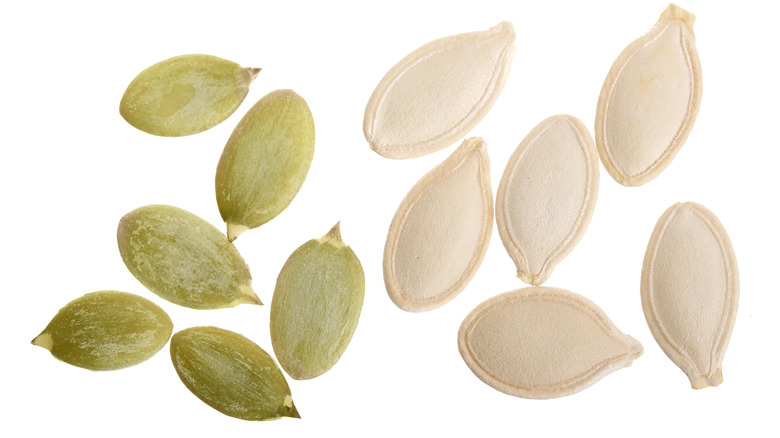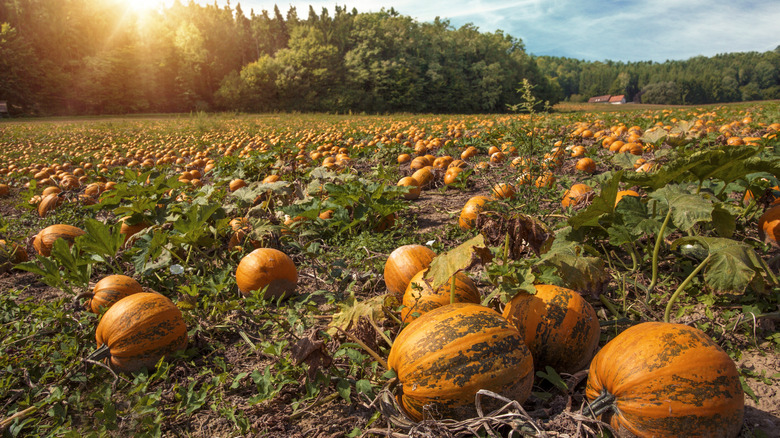The Real Difference Between Pepitas And Pumpkin Seeds
It could be argued that the most interesting (or harrowing) part of carving a pumpkin is when it comes time to scoop out the goop. You reach your spoon into the pumpkin, start pulling out the stringy pulp, and with it come the seeds. Many people choose to simply compost this goop, or even plant it to grow a pumpkin vine at home; others will rinse off the seeds and roast them in the oven for a fun, autumnal snack.
The curious part is that when you go to the store and you buy a bag of pumpkin seeds, they look entirely different from the pumpkin seeds you pull out of your Halloween pumpkin. It is a common misconception that a pepita is the inside of a pumpkin seed (per TODAY.) The truth is that pepitas and jack-o-lantern pumpkin seeds are not part of the same seed — they're not even part of the same pumpkin. They are, in fact, simply cousins.
A cousin from Austria
According to Food52 most of the pumpkin seeds you buy at the farmers market or grocery store come from what are called hull-less pumpkins, meaning their seeds do not have shells. TODAY notes that most pepitas come from Styrian or oilseed pumpkins. According to Specialty Produce, while most pumpkins are native to North and Central America, Styrian pumpkins are actually native to Styria, Austria. They are orange with dramatic green accents, and are not generally found in markets or pumpkin patches, as they are highly prized for their seeds and oil. The membrane around the Styrian pumpkin's seed is thin, so the entire seed is edible raw or roasted, notes Food52 (though they recommend roasted). While pepitas are common for topping granola and salads, you can also grind them up to make sikil pak, an aromatic and savory pumpkin seed dip.
The most common pumpkin you'd carve at Halloween time (and whose seeds you'd roast) is a Howden pumpkin, which is edible, though not as common for baking pumpkin-centric desserts. While the world tends to think of a pumpkin as one kind of vegetable, it's fun to consider that there are different pumpkins for differing purposes: Styrian pumpkins used for seeds and oils; sugar pumpkins traditionally used for pies; and Howden pumpkins used for holiday décor. Pumpkins and pumpkins and pumpkins, oh my!

